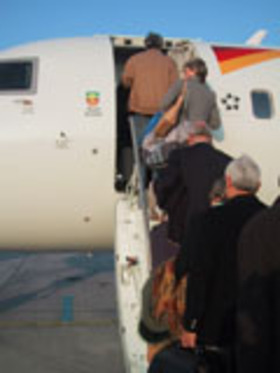Schengen Treaty

- (Photo: EUobserver.com)
Schengen countries normally do not require citizens to show their passports when crossing frontiers between one Schengen country and another.
Most EU states are now involved, and the “Schengen Acquis” was turned into binding EU law in the 1998 Treaty of Amsterdam. Ireland and UK are still outside Schengen and have opt-outs (derogations) in the treaties. This is because the UK is unwilling to have a common travel area with the continental EU countries, and Ireland wishes to maintain its common travel area with the UK.
Denmark joined Schengen in 1997 but has an opt-out (derogation) covering Justice and Home Affairs when measures under this heading are adopted on a supra-national basis.
Notes
- All new applicant countries have to accept the full Schengen legislation.
- Schengen is the border town in Luxembourg where the agreement was made.
The future
Switzerland is expected to join the Schengen zone in late 2006 or early 2007
Links
See also Pillars and Justice and Home Affairs.http://europa.eu.int/scadplus/leg/en/lvb/l33020.htm
